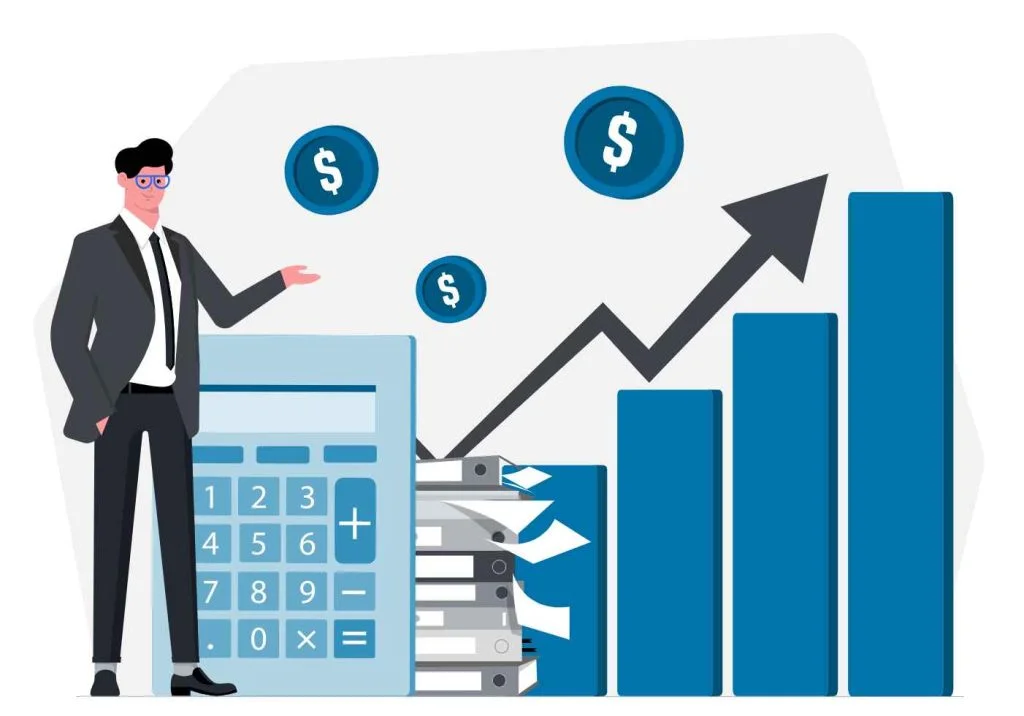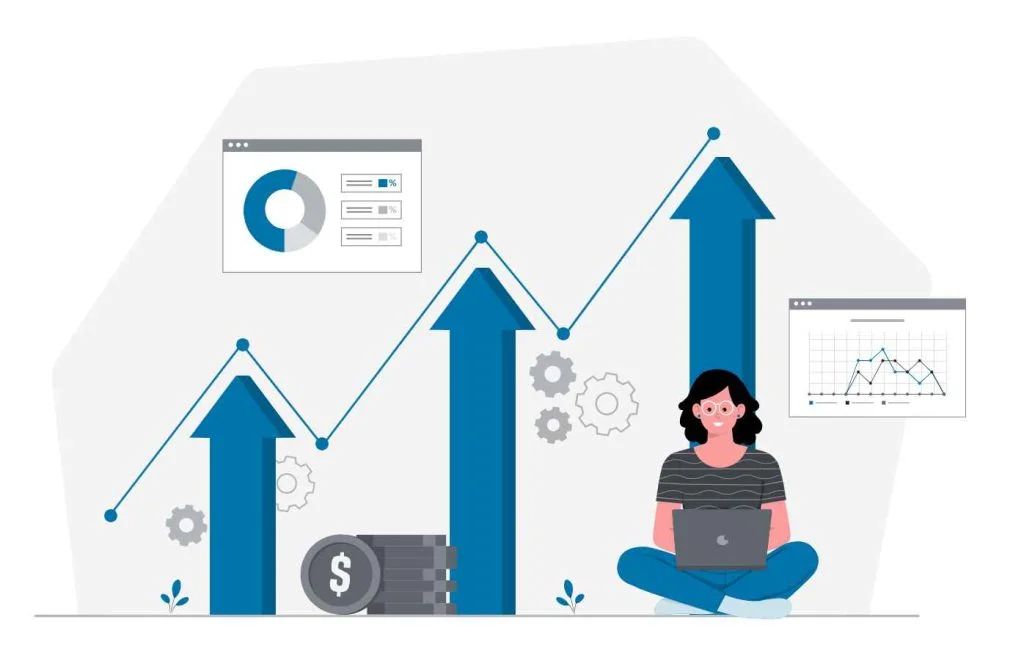Which forex pairs move the most? What is the definition of forex market volatility? In this article we have the answer for you! All you need to do is to make sure you read through this complete article.
When creating a trading plan, it’s critical to take advantage of market overlaps and keep a careful watch on news releases.
Traders who want to increase their earnings can try to trade at more turbulent times while keeping an eye on fresh economic data.
Part-time and full-time traders may design a plan that provides them peace of mind, knowing that opportunities will not be lost if they take their eyes off the markets or require a few hours of sleep.
Which Forex Pairs Moves the Most?
The forex market’s volatility measures total price swings over a period of time, or how quickly a market’s prices vary. The standard deviation of returns is all it is. The volatility of high liquid assets, such as major forex pairs, is low, and they move in smaller increments.
The United States Dollar (USD), Euro (EUR), Japanese Yen (JPY), British Pound (GBP), Australian Dollar (AUD), Canadian Dollar (CAD), and Swiss Franc are the most widely traded currencies in the world (CHF). The EUR/USD, USD/JPY, GBP/USD, and USD/CHF are the four main pairings at the moment.
Which currency pairs are the most volatile?
Which forex pair is most volatile? Exotic (SEK, HUF, TRK) and GBP cross pairings such as GBPNZD GBPCAD have been the most volatile forex pairs (forex pairs that move the most) in recent years.
EURCHF, EURUSD, AUDCHF, USDCHF, EURCAD, and others, on the other hand, are the least volatile currency pairings.
The riskier an asset is, in general, the more volatile it is. However, neither in forex nor in any other market, there is no return without risk.
Although few traders prefer to trade “exotics” because of their unpredictability and high risks, they are the most volatile currency combinations. AUD/JPY, AUD/USD, EUR/AUD, NZD/JPY, GBP/AUD, and GBP/NZD are less volatile but still volatile.
EUR/CHF, EUR/USD, AUD/CHF, USD/CHF, EUR/CAD, and others are the least volatile currency pairings. The average true range (ATR) indicator may be used to assess forex volatility.
Read more article: Foreign Exchange Market Today

Risk and volatility are not the same thing
Volatility isn’t necessarily a negative thing; it might be a trading opportunity. There is, however, a distinction to be made between risk and volatility.
Because volatility is just the standard deviation of returns, it is not the same as risk.
Risk is the possibility that an event or investment’s real returns may vary from what was predicted.
When it comes to market share and trading volume, the forex markets are the most important.
The daily transaction is just over $5 trillion, making it one of the most active markets in the world.
Currency pairings are quoted and traded against each other in Forex markets. As a result, currency pairings are reliant on one another.
If volatility variation is equal to average (higher – lower), the most volatile forex pairs in 2021 are:
- AUDJPY (Australian Dollar to Japanese Yen) (average volatility of 1.12 percent)
- AUDUSD is a currency pair (average volatility of 1.07 percent)
- EURAUD is a currency pair (average volatility of 1.07 percent)
- NZDJPY (New Zealand Dollar/Japanese Yen) (average volatility of 1.05 percent)
- AUDGBP (average volatility of 1.05 percent)
- GBPNZD GBPNZD GBPNZD GB (average volatility of 1.05 percent)
Based on price variance over the past 5 years, the most volatile currency pairings in the Asian session (major pairs) are AUDJPY and AUDUSD.
In the New York session, however, the most volatile currency pairings are USDMXN, USDNOK, and EURNOK, with the most volatile currency pairs’ main forex pairs being GBPJPY and GBPUSD.
Read more article: Foreign Exchange Market Definition

Which currency pair is most traded?
Some currency pairings are more liquid than others, making them simpler to trade in principle. The information about the most popular currency pairings with the largest trading volumes may be found below.
If you want to learn more about each of them, there is plenty of material accessible online.
A ‘cross rate’ is a currency pair that does not include the US dollar (or Cross). EUR/JPY (Euro to Japanese Yen), GBP/JPY (Pound to Japanese Yen), and EUR/GBP are all popular cross rates (Euro to Pound).
There are eight significant currency pairings in total, all of which include the US Dollar. It is not considered a significant currency pair if the US dollar is not one of the currencies in the pair.
EUR/USD
The Euro to US Dollar currency combination is the most commonly traded forex pair in the world, combining the currencies of two of the world’s most powerful economies.
It is less volatile than other currency pairings because to its high liquidity; nonetheless, traders should be mindful that even the most liquid instruments may become extremely volatile under specific situations.
USD/JPY
After EUR/USD, the US Dollar to Japanese Yen currency combination is the second most traded pair. Although the USD/JPY has a lot of liquidity, it may also be considered a’safe haven’ currency during times of global economic instability.
Political and economic developments in China and Korea, however, may have a significant influence on the JPY, which is sometimes referred to as the “Gateway to the East.”
GBP/USD
Because it was the first currency pair to be exchanged through telephone lines or cables that spanned the Atlantic Ocean, the British Pound to US Dollar currency pair is often known as ‘Cable.’
The United Kingdom and the United States are two of the most powerful western economies, with close trading ties. However, the persistent uncertainty surrounding the United Kingdom’s ambitions to leave the EU (“Brexit”).
The GBP/USD has become more volatile as a result of this. The pound is also extensively traded against the euro, as the EUR/GBP cross pair demonstrates.
USD/CAD
The currency combination of the US Dollar and the Canadian Dollar is known as the “Loonie.” Because Canada is a major oil exporter, the Canadian Dollar is closely linked to commodity trade.
Minerals and grains are two types of minerals. International trade flows in these commodities provide to substantial liquidity in USD/CAD, but it may also suffer high degrees of volatility, much like commodities.
AUD/USD
This is the currency pair between the Australian Dollar and the US Dollar. This was formerly the third most popular currency combination in the world.
Australia, like Canada, is a significant exporter of natural gas, coal, iron ore, and agricultural goods.
The AUD/USD has a lot of liquidity due to international trade flows in these commodities, but it also has a lot of volatility.
Read more article: Learn Forex Trading Step by Step
Read more articles
Who has the least impact on the FX market?
The currency pairings with the lowest volatility
EURCHF, EURUSD, AUDCHF, USDCHF, and EURCAD are currency pairings with low volatility based on price fluctuation.
As a result, major currency pairings have lower volatility than developing market currency pairs.
While certain currency pairings have a high correlation while others have a lower correlation, currency pair correlation is usually divided into two types: positive and negative type correlation.
A positive correlation occurs when two currency pairings move in lockstep or in lockstep, while a negative correlation arises when the reverse occurs.
As a consequence, traders tend to avoid trading on more volatile currency pairings in general.
So, which forex pairings are the most volatile in general?
Read more article: Things to know about Forex market
Need Forex Trend Scanner? Click Here!

Types of Currency Pairs
Major, Minor, and Exotic Pairs are the three main categories of currency pairs.
1. Major Pairs
The main currency pairings are the ones that are exchanged the most throughout the world.
They’re recognized for having a lot of liquidity and having the smallest spreads. Some of them are listed below:
– US Dollar/Euro (USD/EUR)
– US Dollar/Swiss Franc (USD/CHF)
USD/JPY (United States Dollar/Japanese Yen)
AUD/USD (Australian Dollar/US Dollar) is a currency exchange rate between Australia and the United States.
– CAD/USD (Canadian Dollar vs. United States Dollar)
GBP/USD (British Pound/United States Dollar)
– US Dollar/New Zealand Dollar (USD/NZD)
The presence of a US dollar on one of the sides of these key pairings is notable, since the US Dollar is without a doubt the world’s most important currency reserve, accounting for around 88 percent of all forex activity.
2. Minor Pairs
These are currency pairings in which the US dollar is not present on one of the sides. Minor currency pairings, such as the yen, Euro, and UK GBP, are formed by the three active minor currency crosses. Here’s the rundown:
– GBP/EUR (British Pound/European Union Euro)
EUR/CAD – (Canadian Dollar/Euro)
EUR/CHF (Euro/Swiss Franc) – EUR/CHF (Euro/Swiss Franc) – EUR/CHF (Euro/
– GBP/JPY (British Pound/Japanese Yen) (British Pound/Japanese Yen) (British Pound/Japanese Yen
– GBP/CHF (British Pound/Swiss Franc) (British Pound/Swiss Franc) (British Pound/Swiss Franc
– CAD/JPY (Canadian Dollar/Japanese Yen) (Canadian Dollar/Japanese Yen) (Canadian Dollar/Japanese Yen)
– Swiss Franc/Japanese Yen (CHF/JPY)
– British Pound/Australian Dollar (GBP/AUD)
– GBP/CAD (British Pound/Canadian Dollar) (British Pound/Canadian Dollar) (British Pound/Canadian Dollar).
Read more article: How to use VPS for Forex Trading
Read more articles
3. Exotic Pairs
This pair consists of a larger, more powerful currency and a smaller currency from a developing nation.
They have quite wide distributions in general. We’ve put up a list of some unusual pairings:
– TRY/EUR (Turkish Lira/Euro)
– NOK/USD (Norwegian Krone/US Dollar)
– US Dollar/Swedish Krona (USD/SEK)
– DKK/USD (Danish Krone/US Dollar)
– US Dollar/South African Rand (USD/ZAR)
– MXN (Mexican Peso/Australian Dollar)
– US Dollar/Hong Kong Dollar (USD/HKD)
– New Zealand Dollar/Singapore Dollar (NZD/SGD)
Exotic currency pairings, such as USD/SEK, USD/BRL, and USD/DKK, are the most volatile and changing.
The currency pairings with the biggest volatility are GBP/NZD, GBP/AUD, GBP/JPY, and GBP/CAD. On average, these cross pairings fluctuate more over 200 points (pips) every day.
For successful risk management, forex traders must be aware of variances in any currency pairings they are trading, as well as any other currency pairs and relationships.
Currency pair correlations, whether positive or negative, provide traders with an overview and a clear image of which direction they should trade and which they should avoid.
Focus on a currency pair with a lot of potential and avoid extremely volatile currency pairings if you’re a forex trader.
Because volatility is such an important metric to assess in order to understand market circumstances, numerous methods of calculating volatility are mentioned below.
Read more article: Foreign Exchange Market Today

Volatility Index
This aids in the determination of one’s present location. The following are some of the most widely utilized indicators:
1. Average True Ranges (ATR) – the most effective tool
This is a frequently used method of evaluating currency price movements that was created by J.W. Wilder. Furthermore, this is a commonly utilized indicator in the currency market.
2. Moving Averages (MAs)
Moving Averages are divided into four categories:
- Easy to understand
- It has been smoothed
- Weighted Linearly and
- MA Exponential
The MA indicator helps us identify market trend directions, whether they are heading upwards or downwards, and whether reversals are possible.
They may also assist establish whether a market is flat if the price does not rise or fall.
3. Channels of Donchian
This is one of the technical indicators that may be used to compare the relative volatility of different financial products.
This indication is applicable to almost all sorts of financial goods, including stocks, futures, and currency markets.
We’ve now gone through the three methods for calculating volatility. As a forex trader, you must understand the volatility of the currency and how to measure it.
Volatility is influenced by a number of things
Technical variables such as resistance levels, support, and price patterns should be examined while trading volatile currency pairings.
Traders should be current on Forex prices, supply and demand, political events, analysis, and news. They should be mindful that any new information will have an impact on volatility.
Traders often utilize technical analysis to determine volatility. Volatile currency pairings will see higher price volatility, as well as more frequent price movement.
Exotic currency pairings, notably those from developing countries, will be more volatile due to their economies’ instability and low liquidity.
The market and its volatility are influenced by a variety of variables. As a forex trader, however, there are a few things you should be aware of:
– Volatile currency pairings adhere to technical forex trading regions such as price patterns, resistance levels, and support, among others.
– You must keep up with all of the current forex news, as well as the price and analysis of forex pairs, in order to properly evaluate the market.
– The volatility of currency pairings may be influenced by any sort of data release.
– Traders may use technical analysis to determine volatility.
A forex trader must also be aware of what is going on in the globe, such as major news events like as Brexit and trade wars, which have significant implications for volatility.
When a trader first begins trading, he speculates on a currency being stronger or weaker than another, and if the trader’s speculation or aim is met, a profit is earned.
Let’s look at some of the most common sorts of currency pairings now that you’ve learned about the components.
Read more article: Tips on Forex Trading for Beginners
Read more articles

In 2022, the most volatile currency pair will be
According to research conducted in South Africa, more volatile currency pairings are generally more lucrative since their values vary more quickly.
Trading in the most volatile currency pair, on the other hand, might raise the risk.
For all currency pairings, the variables determining the foreign exchange (Forex) rate are the same: geopolitics, the country’s economy issuing the currency, exports, imports, and interest rate differentials.
Furthermore, as compared to more stable currency pairings, excessively volatile currency combinations are frequently less liquid. As a result, a well-thought-out risk management and trading strategy is essential.
The most often traded forex pairings with significant volatility are listed below.
JPY (Japanese Yen) / AUD (Australian dollar): Because the AUD is inversely connected to the JPY, this currency combination is very volatile.
The value of Australian metals, minerals, and other exports determines the AUD price, making it a commodity currency.
When there are economic crises, investors favor the Japanese yen, making it a safe haven. As a result, the value of this currency pair changes dramatically depending on the global economic outlook.
NZD/JPY (New Zealand Dollar/Japanese Yen): The NZD’s value is determined by New Zealand’s agricultural exports, making it a commodity currency similar to the AUD. Honey, beef, eggs, and timber are all key exports.
As a result, any fluctuation in the value of these commodities will have an impact on the currency pair.
Euro (EUR) vs. British pound (GBP): The pair’s volatility has intensified since the Brexit vote. This, however, may diminish in the future.
Japanese yen (JPY) vs. Canadian dollar (CAD): The Canadian dollar’s value is determined by the price of oil, making it a commodity money, while the Japanese yen is a safe haven currency.
GBP/AUD (British pound/Australian dollar): Because Australia is a part of the Commonwealth, the British and Australian economies have always been intertwined.
As a result, the AUD’s value is directly linked to the value of Australian exports. Since the United States began its trade war with China, Australian exports to China have decreased, heightening volatility.
US dollar (USD) vs. South African rand (ZAR): Gold is one of South Africa’s most important exports, and it is valued in US dollars.
The volatility of this pair is determined by the gold price, with the exchange rate rising as the gold price rises.
USD/South Korean Won (KRW): The South Korean Won (KRW) was established after WWII and trades at 1000:1 against the US dollar.
Brazilian real (BRL) vs. US dollar (USD): Because the value of this currency pair fluctuates often, it is popular with day traders and other scalpers.
USD/Turkish Lira (TRY): Since the failed coup attempt in 2016, the Turkish Lira has been particularly volatile.
Major developments in Turkish politics and society have resulted in currency value variations. As a result of the uncertainty, traders are keeping a careful eye on the currency pair.
USD/Mexican peso (MXN): Volatility has grown due to an increase in bilateral disputes and a shift in tariff rates.
How does one’s trading approach change based on the degree of volatility?
In comparison to less volatile currencies, the value of more volatile currencies will fluctuate by more pips.
As a result, trading in highly volatile forex pairs is riskier. Because these extremely volatile currencies are more prone to fall and make larger swings, it’s critical to choose the correct position size while trading.
The biggest currency pairings have a lower level of volatility. EUR/USD, GBP/USD, USD/CHF, and USD/JPY are the four currency pairings.
Read more article: How to Make Profit on Forex Trading

Forex volatility is taken into account while trading
Traders who want to profit from the volatility in the currency market should take the following precautions.
– choose an appropriate forex pair for trading
– Examine the currency pair’s fundamentals and technical features.
– finalize a forex trading plan
– open a forex trading account and deposit money
– Create a position, keep an eye on it, and then shut it.
Currency volatility and stability
The prices of many commodities are constantly fluctuating. Price fluctuations are often related with volatility.
Volatility is one of the most significant aspects for forex traders to consider before entering or canceling a deal.
By looking at the volatility, financiers can measure the risk. If the market is particularly volatile, they may limit their trades to avoid incurring more losses.
The standard deviation of an asset’s values measured using past prices is known as historical volatility. Current pricing and predicted risks are used to compute expected volatility.
For a period of time, almost every currency may be volatile. Some currencies, on the other hand, are more stable than others.
These currencies are often associated with countries that have a low inflation rate, a stable balance of payments, trade indicators, a political system, government balanced accounts, predictable government monetary policy, and a diverse economy with products and services.
Despite the fact that volatility patterns are shifting, financial analysts consider a certain currencies to be more stable than others.
Hong Kong, New Zealand, Singapore dollar, Norwegian Krone, and Swiss franc are the currencies.
These nations’ governments have clear government financial records and do not intervene in FX markets.
As a consequence, major forex trading currencies such as the US dollar, Euro, British pound, Chinese yuan, and Japanese yen have remained relatively steady.
In contrast, the currencies of certain emerging market nations are particularly volatile, since they are influenced by global demand and supply as well as local policy changes.
The Russian ruble, Brazilian real, Mexican peso, and Argentine peso are the four currencies mentioned.
Read more article: Get Funding for Forex Trading

Pairs of forex correlations
The positive or negative correlation between two different currency pairings is known as forex correlation. There is a positive association. When two pairs rise or decline at the same rate throughout time, it is said to be 100 percent. EURUSD and USDCHF, for example, have a negative connection because
Forex pairings that are not connected
Non-correlated currency pairings, such as USD/CHF, USD/JPY, USD/CAD, NZD/USD, AUD/JPY, EUR/CAD, and GBP/CHF, have neither a positive nor a negative association.
EURUSD and USDCHF, for example, are not non-correlated pairings; rather, they are negatively correlated pairs.
This is because non-correlated pairings have no connection, and some pairs, like EURCAD and AUDJPY, are logically from distinct markets.
Forex correlation and volatility are two different things, and there is no evidence that correlation affects volatility.
Read more article: Free Software for Forex Trading

Conclusion
Finally, we may infer that the currency market is riddled with anomalies. As a result, it is critical to maintain a constant check on market factors and volatility indicators.
As a result, a Forex Trader should be familiar with forex currency pairs and understand what variables make them volatile, as well as which forex pairs move the most.
This will provide you with some assurance, stability, and, most importantly, peace of mind.
Read more article: Basics of Forex Trading for Beginners











Leave a Reply